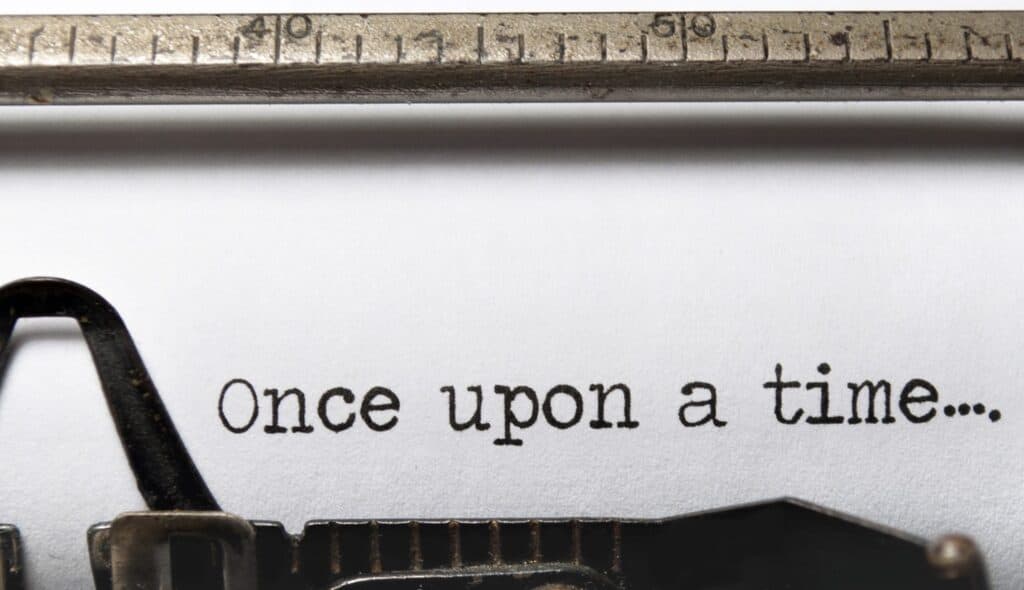We were on a zoom call with a prospective client recently, talking about a real passion of ours; the brand narrative – the story we tell that quickly communicates what a brand is all about.
It’s something that should form an integral part of any brand strategy. Call it your purpose, call it your ‘why’. It doesn’t really matter.
It’s the juice, the life-force behind the brand. And it’s essential.
As marketers, we all inherently know this.
But on this call, having explained why the brand narrative was so important in the development of the marketing strategy, we were asked a perfectly reasonable question.
We were asked what ROI could be expected from doing this piece of work.
I have to say, the question threw me somewhat.
We didn’t have the answer.
And it’s not surprising.
It is virtually impossible to put an ROI figure on brand strategy work. If you spend £30k developing your brand, what will that return? Or £50k. Or more.
The reality is that no one could accurately answer that, and whatever you say it couldn’t be proven. At least not categorically. There are just too many factors involved to make any kind of accurate prediction.
So the truthful answer to that question is ‘we don’t know’.
Of course, you can undertake brand tracking over time and correlate that with business performance. Sometimes the correlations are incredibly convincing, but it’s really difficult to try and prove undeniable causality.
That said, someone somewhere is always going to try to put a number on it. And there are plenty of studies that some pretty credible organisations have carried out.
Here’s a good number for starters:
A McKinsey & Company study has showed that organisations with a clear brand story perform on average 20% better than their peers.
Why?
Because clear brand stories lead to greater brand coherence – delivering a consistent message, tone of voice, look and feel, across every touchpoint that customers have with your brand.
It takes time to build understanding of your offer. It takes time to build trust. Buying decisions can take time.
If your message is inconsistent over time and across different channels, you have little hope of building trust.
Plus, we need to remember that brands aren’t built solely through marketing communications.
So, what’s a brand again?
A brand is the collective impression that a customer gets from every single interaction that they have with your organisation. Every phone call, every meeting, every email. Every visit to your website. Everything they read about you in the press. Everything their friends tell them about their experience with you.
So that means the behaviour of employees needs to be consistent with the brand you want to create – with the experience you want your customers to have.
A brand narrative can help articulate what you’re trying to be as a business. Combined with your vision, mission and values, it’s something that you will want everyone in your company to understand and buy into.
So, the narrative has to be true. It can’t be made up.
When employees are more engaged and understand the story (and assuming they believe it), they’re going to be more engaged and perform better. They’re more likely to live and breathe your ethos. People who buy into the reasons why they’re doing what they do, will almost always do it better.
So if your staff are engaged, and doing the best job they can – and you combine this with more consistent and powerful communications, then it’s easy to see how a clear brand story delivers positive returns.
Steve Jobs knew this.
There was a man who knew how to tell a story. There was a man who knew that ‘why’ is more important than ‘what’ or even ‘how’.
Features and benefits are important, sure. But unless you get people to listen to you, to engage with you, then they won’t hear what you have to say. You need to be interesting.
And the best way to be interesting is to tell a story.
This is what Steve Jobs had to say when he launched the iPhone in 2007.
“This is the day I’ve been looking forward to for two and a half years.
Every once in a while, a revolutionary product comes along that changes everything and Apple has been—well, first of all, one’s very fortunate if you get to work on just one of these in your career. Apple has been very fortunate. It’s been able to introduce a few of these into the world.
In 1984 we introduced the Macintosh. It didn’t just change Apple. It changed the whole computer industry.
In 2001, we introduced the first iPod. And it didn’t just change the way we all listen to music, it changed the entire music industry.
Well, today we’re introducing three revolutionary products of this class. The first one is a widescreen iPod with touch controls. The second is a revolutionary mobile phone. And the third is a breakthrough internet communications device.
So, three things: a widescreen iPod with touch controls; a revolutionary mobile phone; and a breakthrough internet communications device. An iPod, a phone, and an internet communicator. An iPod, a phone…are you getting it? These are not three separate devices, this is one device, and we are calling it iPhone. Today, Apple is going to reinvent the phone, and here it is.”
He went on to talk about what it could do. The problems it solved. Benefits and features.
But it was always the set up that mattered.
The ‘why’.
The brand narrative has always been just as important for Apple as its products.
How much is Apple worth?
Still not convinced?
OK, here are a few more statistics for the non-believer.
Want to increase sales? Get a good brand story.
Headstream research states that if people love a brand story, 15% will buy the product immediately, 44% will share the story and 55% are more likely to buy the product in future.
Need someone to invest in your vision? Get a strong brand story.
Reuters say that 82% of investors believe that brand strength and name recognition are becoming more important in guiding them in their investment decisions.
Want customer loyalty? Sort your brand story.
The Harvard Business Review has claimed that 64% of consumers cite ‘shared values’ as the reason why they have a relationship with a brand.
OK, so it might not be 100% possible to predict the return on your investment. But the brand narrative is core to brand coherence and consistency. And that drives so many other benefits.
Need even more evidence or need to convince your CEO? Read this: https://thetomroach.com/2020/11/12/the-most-valuable-business-tool-ever-invented/
At the end of the day, when asking the question ‘what ROI does a brand narrative deliver?’ – try putting it alongside the question ‘what value does strong leadership deliver?’
Some things don’t need proof.
They’re just true.



